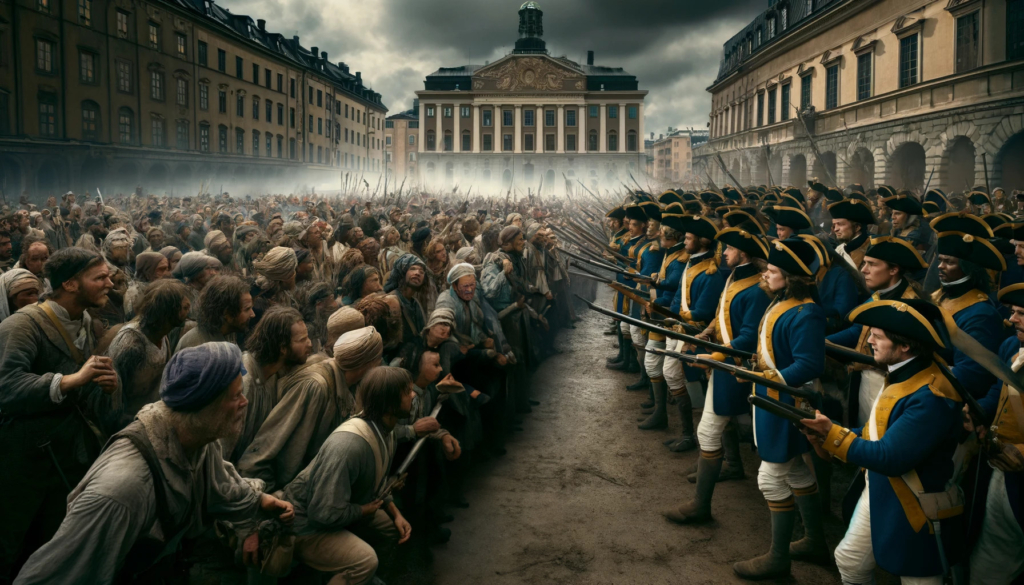The last large scale Swedish peasants’ revolt was spearheaded by men from Dalarna, hence the name ”The Great Dalecarlian Dance”.
On June 6, 1743, the march from Dalarna to Stockholm began. There were many reasons for the march; to defend Stockholm from a possible attack from Russia, to demand peace and that those responsible for the disastrous war was punished, and to get the Danish prince elected heir to the throne.
More and more joined along the way, and the peasant army was approximately 5,000 strong when it approached Stockholm. Despite the numbers however, many were weak, starved and old. Still, the Hat party in Stockholm became anxious when such large numbers andvanced, especially since the poor and starving people in the capital itself might join a revolt.

When the army approached Stockholm, the king, Fredrik I (above), rode out to parley with them. He held a speech in which he invited the leaders to an audience at the castle, but forbade the army to enter the city. He also forbade the city’s regiments to harm the peasants. After he returned to the captial, disorder broke out amongst the rebels. Though the leaders wanted to obey the king, many peasants felt that they had come too far to turn back, and the majority of the army continued towards Stockholm.
At Norrtull (an entrance to the city), the peasants came face to face with 300 soldiers and four cannons pointing at them. The threat of violence hung in the air. Then, the peasants surged forward, and since the soldiers had been told by the king to not harm them, they stood down. Their weapons and cannons were seized by the rebels, who continued further into the capital.
When the army of peasants had entered Stockholm, many politicians fled. The king however stayed to negotiate with the rebels. They were told that some of their demands would be met – there would be peace with Russia, and those responsible for the disastrous war would be punished. However, the terms of the peace was that Empress Elisabet’s relative Adolf Fredrik had already been elected heir to the throne.
During the negotiations, an army of 6000 men returned to the capital from the war. The rebel leaders realized that the cause was lost and tried to persuade the peasants to back down. But the rebellious peasants had marched too far and would not give up.

At what today is Gustav Adolfs torg, armed peasants and soldiers stood face to face. A heated exchange of words led to shots being fired at the soldiers. Orders went out to return fire. But the soldiers, who belonged to the Västmanland regiment, refused. A man shouted: “It’s our parents, our brothers and relatives. We’re not shooting at them!”
For a while, it looked like the soldiers would mutiny and the peasants would win. But then reinforcements came from other regiments, which had no connections to Dalarna. They attacked and about 150 peasants fell while 3000 were taken prisoner and the rest scattered to the wind.
Six of the rebel leaders were executed, many others sentenced to whipping and/or long imprisonments. Jan Mattson, the man who shouted ”We have no superiors!” in the lead-up to the rebellion, was sentenced to 20 lashes and hard labour at Varberg’s fortress. Many of the soldiers who had refused to attack their countrymen were equally punished.
And so ended the last large scale peasant revolt in Swedish history. But I still have one more story to tell, that of the Lofthuus rebellion in Norway.
Source:
Adolfsson, Mats. Bondeuppror och gatustrider. Svenska uppror 1719 – 1932. (2007)

